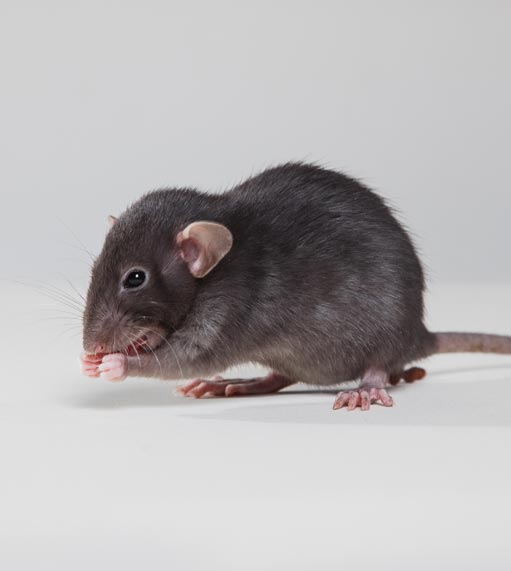Beaverton Pest Control
RODENTS
Mice and rats are active and a problem year-round. The problem gets much worse during the winter months when they enter structures in search of food and shelter.
Once Rats are established they are very prolific and can add to their population quite quickly. A female rat can reproduce 15 times a year. A pair of brown rats can produce as many as 2,000 descendants in a year. Rats mature at the age of 3 to 4 months.
Once Mice are established the gestation period is about 19–21 days, and they give birth to a litter of an average of six to eight. One female can have 5 to 10 litters per year. The mouse population can also explode very quickly.
Most rodent infestations in homes and businesses are caused, primarily, by two species of mice and two species of rats.
Mice: Common House Mice and Deer Mice
Rats: Norway (Brown) Rats and Roof Rats
Our approach to rodent control involves, IPM (Integrated Pest Management) which is a thorough inspection in order to identify all areas where the rodents are active and including these areas in our treatment plan. We then service these areas over a period of time sufficient to ensure full control of the infestation.
It is also very important to identify all points of entry. These places can be surprisingly small. For mice, these places can be as small as a dime and as small as a quarter for rats.
Once these locations are identified, these access points need to be eliminated, referred to as rodent exclusion. As long as these access points remain, new rodents can continue to enter the structure. We offer rodent exclusion services as an adjunct to our rodent control service, covering most of the commonly-encountered issues. Although these services add to the cost of a job, the results of our control efforts usually last much longer.

Deer Mice
In warmer months deer mice usually shelter in outdoor areas such as thick brush, debris areas, wood stacks, old fence posts, or hollow tree logs. In the winter months they may try and invade your garage, home, shed or rarely used vehicles to seek shelter. Basements and attics make the ideal mouse habitat.
They feed on insects, seeds, nuts, berries and small fruits.
The hazards of having this mouse around is they carry the potentially fatal Hantavirus Pulmonary Syndrome. It can be transmitted through breathing in aero soiled urine droplets of infected deer mice or by coming into contact with a mouse carcass.
Beaverton Pest Control makes sure all holes larger than the diameter of a pencil are sealed. They will seal any cracks and voids and look to make sure proper drainage at the foundation diverts water away from the building.
House Mice
House mice have keen senses of taste, hearing, smell and touch. Although their ability to perceive objects is limited to 1 to 2 feet, they can see movement up to 45 feet. Mice use their sense of smell to locate food items and recognize other individual mice. House mice have acute hearing and readily respond to unusual noises as a means of detecting and escaping danger.
Mice are excellent climbers and can run up any rough vertical surface, balance along horizontal wire cables or ropes, and can jump vertically onto a flat surface 12 inches above the floor. They typically gnaw 11⁄2 inch openings into cardboard and similar products. They will also gnaw electrical wiring, soap and other soft objects.
In nature, mice prefer to eat cereal and seeds, but they will also eat insects, nuts and fruits. Inside structures, mice will consume almost any human food, but prefer grain based products.


Norway Rats
Norway rats are primarily nocturnal and often enter a home in the fall when outside food sources become scarce. These rats are known to gnaw through almost anything – including plastic or lead pipes – to obtain food or water.
Outdoors, Norway rats live in farmlands, fields, and in structures. These rats frequently are found under concrete slabs, they burrow in soil near riverbanks, in garbage and woodpiles. They are even capable of burrowing underneath the foundation of a typical home.
Norway rats can cause damage to structures through their gnawing and eating. These rats are also vectors of diseases including plague, jaundice, rat-bite fever, cowpox virus, trichinosis and salmonellosis. In addition, Norway rats can contaminate food and introduce fleas into a home.
Roof Rats
The roof rat is the smaller of the two commensal rats, as the Norway rat is larger in size. Roof rats are also referred to as black rats or ship rats. The roof rat gets its name from its tendency to find shelter in the upper parts of buildings. Once inside, roof rats not only damage materials by gnawing through them, but they also contaminate stored food and serve as vectors of dangerous diseases.
Roof rats are normally black or gray in color, with long ears, a long tail (longer than their body) and a pointy snout.

